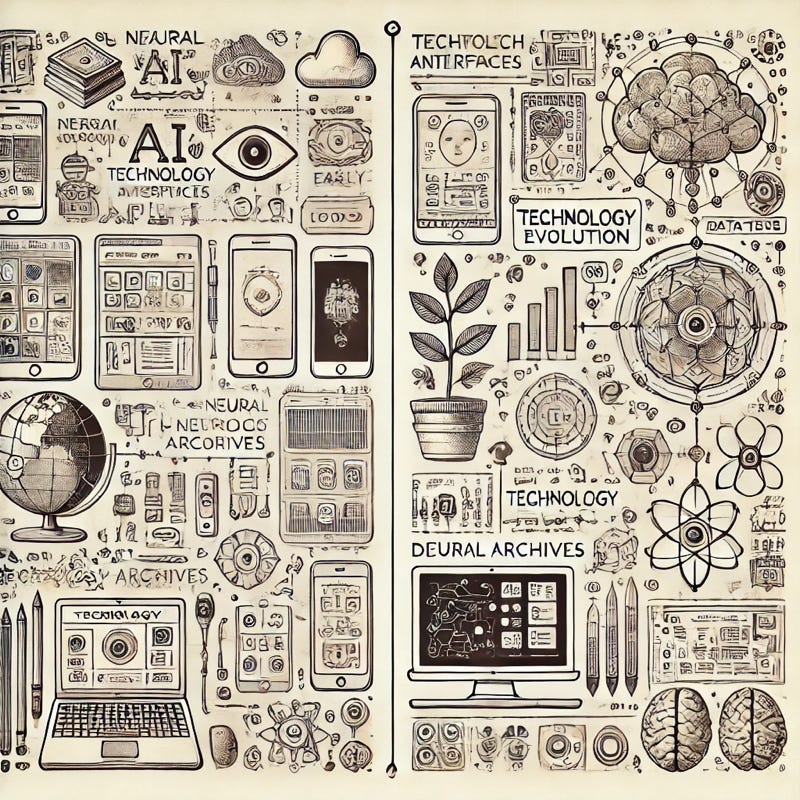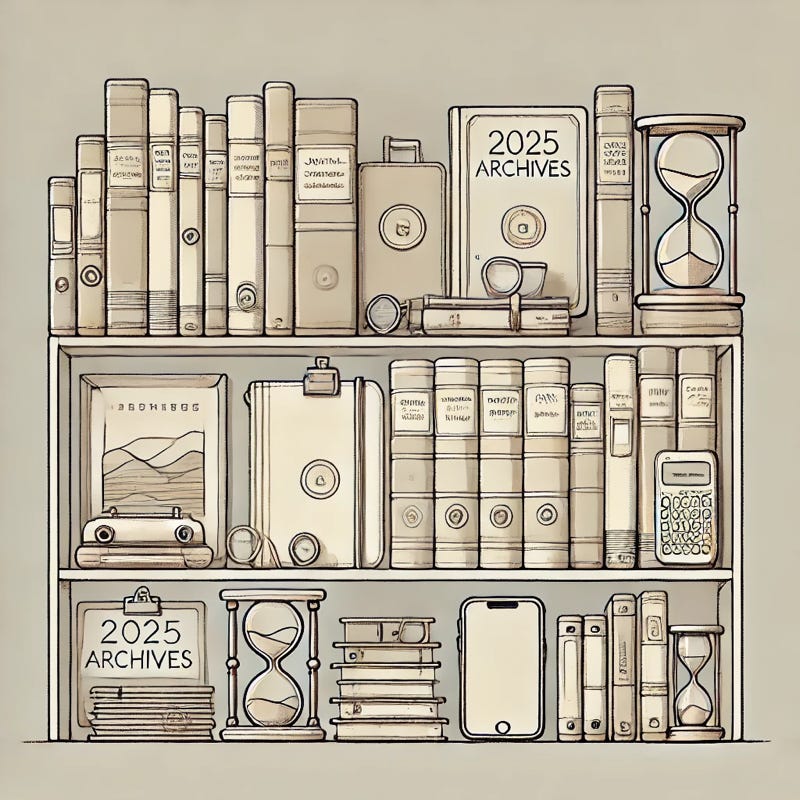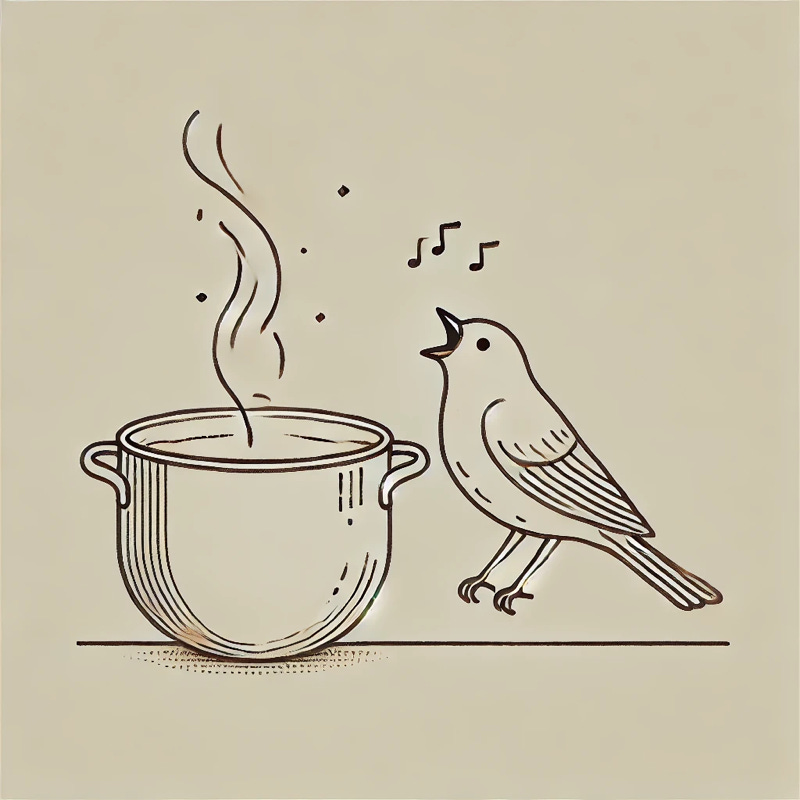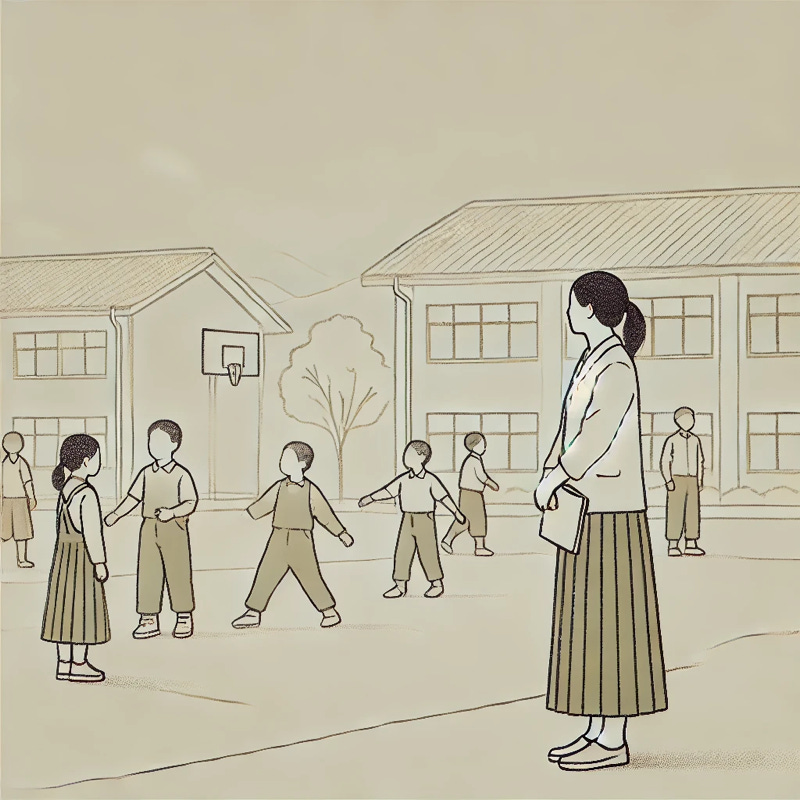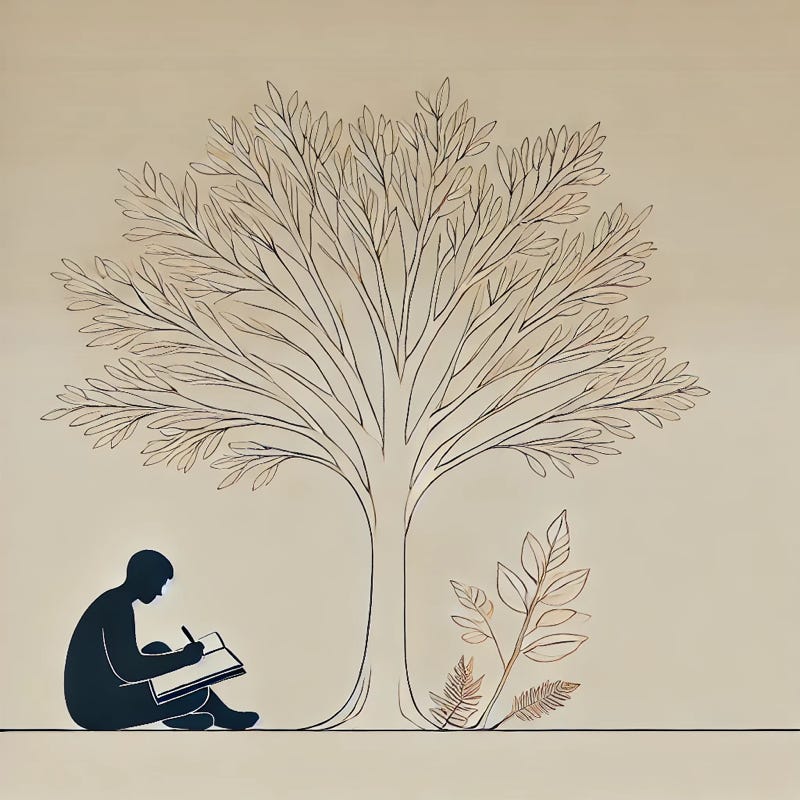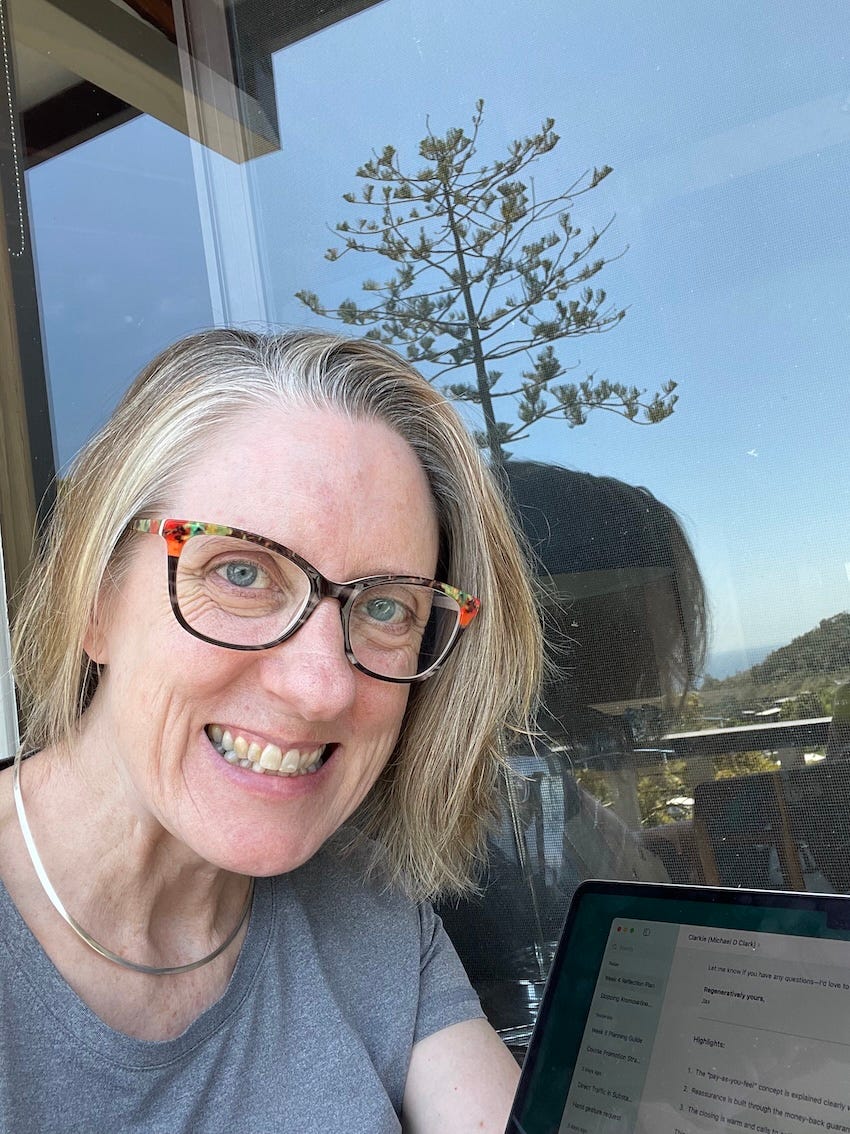16. The Turning Time...A View Back From 2200AD
Some thoughts as we end this quarter of a century from 'Reconnect Meaning' - a tool designed in 2100 to uncover forgotten connections between human, ecological, and technological systems.
Here’s Looking Back on You and Me, Dear Reader,
Imagine it’s the year 2200. You’re reading an excerpt from ‘Reconnect Meaning,’ a tool designed to uncover lost connections between humans, nature, and technology. This archive offers a glimpse into the Turning Time—the pivotal years between 1999 and 2025 that shaped the world we now live in.
Have you got my drift? My time-drift, I mean? Ok, strap yourself in and read on…
A view of the ‘Turning Time’: 1999/2000 - 2024/2025
In 2200, we live with the ripples of choices made during the Turning Time, a period as fragile as it was transformative. It’s hard to imagine the Turning Time now, so far removed as we are in 2200. Yet its shadows and echoes are woven into our lives every day. This was the period when humanity stood on the threshold—when the direction was set for the world we know today. Small, seemingly inconsequential choices gathered momentum in a world fragmented and disconnected, yet paradoxically interconnected. We must not seek to blame our ancestors, instead we must seek to understand them in their context and environments.
To know who we are now, we must look back to those pivotal years at the turn of the century into the next 25 years. That is: New Years Eve 1999 to the beginning of 2025. A time of dazzling innovation, profound reckoning, and fragile hope.
The Turning Time - An Era of Contradictions
From the vantage point of 2200, the Turning Time is both familiar and alien. This was the age of pocket devices called “smartphones” and nascent artificial intelligence. People communicated with machines that could write, draw, and predict outcomes. Early versions of our aqua-digita systems today. Yet, alongside these marvels, there was also profound disconnection.
The term Turning Time is often used by historians today to describe this period of simultaneous acceleration and stasis. It was when humans faced the intertwined crisies of climate change, social inequities, and rapid technological disruption. It was also a time of profound ingenuity—when the seeds of living systems thinking, regenerative practices, and multi-generational foresight began to sprout.
The Turning Time marked the beginning of a shift from rigid hierarchies to adaptive, living systems. These frameworks—whether in ecological restoration, regenerative agriculture, or collaborative HumAInity—demonstrated humanity’s capacity to embrace complexity with care and creativity. Though this was no well understood at the time.
Moments That Defined the Turning Time
Looking back, the humans of 2200 see several key events as markers of this era:
1999–2000: The Y2K “Crisis”
A non-event, but symbolically a moment when humanity confronted its dependence on technology.
2001: The Events of 9/11
A catalyst for global shifts in politics, trust, and surveillance.
The first smartphone revolutionised communication, connectivity, and access to information, bringing in flexible human user interface, laying the groundwork for the digital ecosystems that dominated the Turning Time.
The Arab Spring and other social movements highlighted the power of platforms like Facebook and Twitter, while also exposing vulnerabilities to disinformation and manipulation.
2019–2020: The Black Summer Bushfires in Australia
A harrowing demonstration of climate change’s immediate effects, these fires destroyed ecosystems, displaced thousands, and served as a visceral wake-up call for the global community.
2020: The COVID-19 Pandemic
A global rupture that revealed systemic inequities while accelerating technological adoption.
2022–2025: The AI Boom or AI Spring
Generative AI became a tool of both fear and fascination. Early adopters saw its potential to augment creativity and problem-solving, while others worried about its ethical implications.
New Years Eve 2024: President Putin reaches 25 years in power
These individual stories, such as Sue’s and the others that are yet to arrive, intertwine with global milestones that shaped the Turning Time.
Artefacts of the Past
Throughout this era, most humans lived in increasingly rigid systems. They measured their worth in productivity, upheld structures of hierarchy, and sought endless growth at great cost to the planet.
Amidst the challenges of the Turning Time, seeds of new thinking began to sprout. Concepts like ‘Practical Imagination’ and ‘Operational Imagination’ gained traction among those seeking to bridge the gap between vision and action. These movements, while nascent, represented a collective desire to imagine better futures and make them tangible through thoughtful, adaptive systems.
Future scholars marvel at these paradoxes. They study the frenetic energy of early 21st-century life—emails sent at midnight, social media platforms that both connected and alienated, and work cultures had been riddled with a complex phenomena known as “burnout” for half a century.
Changing Language - Boiling Frogs and Canary Songs
The Adaptive Metaphors of the Turning Time
It was during the Turning Time that scholars, in collaboration with the machines, attempted to rewrite metaphors —not to passively boil like frogs, but to heed the canary’s call and act — in an controversial effort to stabilise language to counter global warming.
During the Turning Time, the metaphor of the boiling frog persisted, despite its scientific debunking. Humans seemed to cling to it because it resonated with a deeply embedded fear: the worry that they would fail to notice gradual danger until it was too late. Yet, subconsciously, many began to compare it to another, more accurate metaphor—the canary in the coal mine.
This second metaphor is rooted in real-world experience of canaries who were used to detect poinsonous gasses in coal mines from 1911 until they were replaced by machines in 1986. This metaphor holds a key difference: while boiling frogs represented passive inaction, canaries symbolised an early-warning system that required decisive human action to prevent disaster. Unlike frogs, canaries offered a chance for humans to jump before the waters boiled over, though they had to die for this to be possible.
Extinction Echoes and the Real Heat
Ironically, even as the metaphor of the boiling frog endured, real frogs were disappearing. Amphibians worldwide faced extinction from habitat loss, pollution, and climate change—powerful signals that humanity’s pot was indeed heating up. But humans didn’t rely on boiled frogs as indicators; instead, they began to feel the heat themselves.
The rolling disasters of climate change—wildfires, floods, and collapsing ecosystems—became impossible to ignore in their immediacy and scale. Day-to-day lives were disrupted, not by distant warnings, but by tangible, personal experiences of a warming planet. This report from the island nation of Australia shows the government analysis of the time.
Leadership and the Leap
As the Turning Time progressed, people began to abandon old forms of leadership that were reactive and hierarchical, and instead demanded a new kind of guidance—one that prioritised foresight, collaboration, and action. The emerging leadership frameworks focused on:
Practical Imagination: Grounded, actionable solutions inspired by real-world needs and possibilities.
Operational Imagination: Creative approaches embedded directly into systems, ensuring adaptability and foresight.
These models weren’t just tools for leaders—they’re blueprints for all of us. As we face today’s challenges, we can draw on these principles to shape systems that are resilient, adaptive, and living-centred.
The Lesson of the Boiling Frog Myth
From the perspective of 2200, the survival of humanity itself was proof of its capacity to adapt. The myth of the boiling frog didn’t simply fade into obsolescence; it became a cautionary tale of what might have been. Hence the saying,
“frog don’t boil, but canaries do sing!”
The people of the Turning Time realised they were not passive victims of their circumstances. Like the canary that warned coal miners of danger, the heat of their own experience spurred them to act. In doing so, they proved that humanity, too, could leap from danger and survive the pot. The language work commenced by the scholars and machines, would not have been successful if it were not experienced as obvious common sense by communities who used this term worldwide.
Personal Stories Amid Global Shifts
One account often referenced from this time is the personal journals of a woman named Sue. Her reflections capture the tension of living through these years:
“These systems—school systems, work systems, family systems—don’t seem to be about healthy humans.
“As a kid, being called a ‘dobber’ was the worst thing. It didn’t matter if you were right—telling was a betrayal. The school system drilled this into us early. Teachers used to tell us to go away and solve things ourselves. Either way it was stay silent, or you’ll face the consequences too.
“I’ll never forget being a kid watching Rolf Harris on TV with my family. He told a story about a kid dobbing on their brother and getting smacked for it. ‘What’s that for?’ the kid asked, and the mother said, ‘For dobbing.’ My parents nodded along like it made perfect sense. It didn’t. To me, as someone who saw honesty as black and white, it felt so unfair. But it wasn’t just about rules—it was about enforcing silence at all costs. That was before he was convicted as a child sex offender. He was voicing the system of silence that benefited him and a whole lot of offenders like him.”
'“These systems, they never quite suited me, they were dangerous and damaging. But even within them, I found the cracks. There’s always been creativity and connection. When I saw the same think repeating with my own children, that’s when I got behind the imagination movement. Seems the best way I know how to make these invisible forces more gentle, more…humane. I was one of the first to ask them to sing '“Frog’s don’t boil” at kindy. Well, it was a small thing back then, very controversial, but it worked! It’s normal to us now. Everywhere.”
These personal reflections are deeply intertwined with the larger societal shifts of the Turning Time. The introduction of generative AI, the global reckoning with climate change, and the COVID-19 pandemic weren’t just world events—they shaped the daily lives and choices of individuals like Sue.
Her journals not only document her personal journey but also provide insight into how humanity navigated this transformative era:
The growing awareness of living systems thinking and its influence on how people connected with each other and their environments.
The tension between technological innovation and the need for living-centered practices.
The quiet moments of resilience and care that planted the seeds for a more regenerative future.
In her journals, Sue reflected on the tension between dreaming big and getting things done.
Sue’s generation, navigating the Turning Time, began to see imagination and narrative as not just as a flight of fancy but as a tool for solving real problems.
‘Operational Imagination,’ as it was referred to, emerged as a way to embed creativity directly into systems, ensuring adaptability and foresight. Regenerative farming is an embodiment of practical imagination. AI tools were used not only to predict outcomes but to craft adaptive workflows. Gentle and flexible and forgiving systems training was developed for AI and other systems at this time.
This individual story, however, is just one thread in the fabric of the Turning Time. There are many perspectives, many pasts, many people and peoples. Together, as we recover as much as we can from the neural archives 'Reconnect Meaning', we will find these stories form a mosaic that helps us understand how humanity navigated this transformative period.
Learning in 2200
In 2200, those who study this time use immersive AI to reconstruct its events, our simulations in present-day grew out of turning time advancements like VR or digital twins to provide continuity. Scholars walk through the streets of 2025, inhabit the lives of its people, and feel the weight of their decisions. Yet even with such vivid simulations, they seek out stories—personal narratives that give texture and nuance to the raw data.
“Machines can show us what happened,” says one historian from the Era of Renewal. “But only human stories can tell us why it mattered.”
This is why the journals of individuals like Sue’s are so cherished. They offer not just a record of events but a glimpse into the human heart—its struggles, hopes, and capacity for change.
The Legacy of the Turning Time
For those in 2200, the Turning Time is both a cautionary tale and a source of inspiration. It was a time when humanity’s trajectory could have gone disastrously wrong but also when the seeds of renewal were planted.
Through personal accounts, like Sue’s journals, we see how individual lives mirrored broader societal struggles and triumphs. Her reflections show how one person, navigating the small cracks in rigid systems, can spark change and contribute to a broader shift in thinking.
Historians of 2200 note that Operational Imagination became the bedrock of many systems we now take for granted. From dynamic urban planning to education systems that grow with their learners, these models were born out of a time when humanity needed both audacious vision and grounded action.
As we reflect on the Turning Time, may your choices today inspire the narratives of resilience and imagination that future generations will cherish
Dear SubStack reader on the brink of 2024–2025,
You are living in what we have called the Turning Time. The choices you make today ripple across decades, shaping the world we inherit.
If we could speak to you from here, the year 2200, we might ask:
Are you slowing down enough to see the long arcs of your actions?
Are you nurturing the systems—human, ecological, and technological—that will sustain us?
What stories are you telling yourselves about progress, connection, and care?
But here’s what we want to know most:
As we reflect on the Turning Time, your words today could become the seeds of wisdom for future generations. What would you like them to hear, to know, to carry forward?
Take a moment to pause, breathe, and imagine us. What wisdom, hopes, or warnings would you pass on to us as we walk the paths you set in motion?
Your answers are not only for us—they are for you, too. They remind you of what you value most as you enter this new year.
With curiosity and care,
Your descendants, circa 2200
And, here is a ‘your turn’ as always…from me, Jax, here and now…
I started this article a week ago reflecting on my own past quarter decade. At first, I took a very personal approach. I moved out of Sydney with my young daughter to live in a country town in Victoria, closer to family and to work with community. Solo parenting, inconsistent work, and the joy of sharing golden years with a creative, diverse community shaped my resilience and perspective during this period. I struggled to tell the whole story without sounding all doom and gloom. The bad parts were pretty bad, and the highs seemingly short-lived. Over these 25 years, I have been a small player in major systems—education, community, social, emergency, and more. All designed supposedly to help society. Yet, when we look at the output, we have a feedback loop that tells another story.
My work is taking a wider look at the world, so the personal part of my story was actually a fragment of the systems that me and my family and friends bent like the Blackwood Tree I wrote about months ago. Why do we have to bend to our systems when they have been harsh and cruel. I chose for this issue to flipped my last quarter century it to look this optimistically, through a system, and a living systems, framework. I hope I didn’t bewilder you!
Your Turn… Share Your Story
I invite you to contribute your account to this larger narrative:
What do you remember most vividly about the years between 1999 and 2025?
How did you adapt to or resist the changes in technology, culture, and environment?
What moments of connection, resilience, or transformation stand out to you?
By sharing your story, you add depth and diversity to the picture we’re painting for future generations. I’ll curate these accounts into a collective archive—one that captures the richness of this time and passes it forward to those who will follow.
Take a moment to pause and imagine the year 2200. What wisdom, hopes, or warnings would you pass on to us as we walk the paths you set in motion? Share your reflections below or by email to inspire others in this pivotal moment.
Final Words
So, here’s the pinch point. What if, today, you chose to spend 10 minutes imagining a better future for you, for your family and friends, for all of us. It doesn’t have to be perfect. Mine isn’t. If you have time, even a further 10 minutes acting on it? These small choices ripple forward. Right?
What seeds of imagination are you planting today?
How can you balance dreaming big with taking meaningful steps forward?
The people of 2200, living amidst the legacy of the Turning Time, remind us that every choice matters—not just for today, but for generations to come.
Share your reflections with us below or by email—your stories can inspire others in this pivotal moment. #TurningTimeReflections
I might add that the greatest triumph for me was getting to see real humans grow, despite the twisting traps around. I have no end of love for my daughter, my nieces and nephews, my friends children - none of whom I see any where near enough. Despite all the rigid systems, humans have not changes in essence very much at all.
Happy New Year and best always,
Jax
PS, Many of us are grappling with how AI is reshaping our work and lives. If you’d like to explore this together, join my last Introduction to AI course starting January 4th. Let’s “harness” our imaginations intentionally to face this change head on.
Want more?
Generative AI guidance for professionals and solopreneurs, contact me Jax@gen2200.com.
My photos— Flickr



